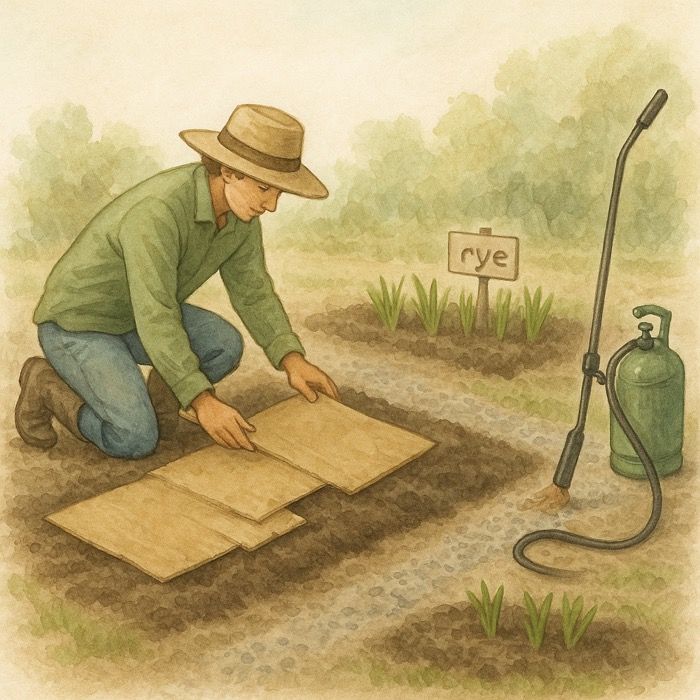Growing Guide for Hyacinths: Cultivate Fragrant Spring Blooms
Hyacinths are among the most beloved spring-blooming flowers, famous for their intensely fragrant blooms and vibrant colors. These versatile bulbs add beauty and elegance to gardens, walkways, and containers. In this guide, we’ll cover everything you need to know about planting and growing hyacinths successfully, from choosing the right location to ensuring healthy, colorful flowers each spring.
Introduction to Hyacinths
Hyacinths (Hyacinthus orientalis) are a perennial favorite in the spring garden, known for their dense, spike-like flowers and rich, sweet fragrance. Native to the Mediterranean and Middle East, hyacinths come in a range of colors, including blue, pink, purple, white, and yellow. Their striking beauty and aroma make them an excellent choice for borders, beds, or as potted plants indoors.
Key Attributes of Hyacinths:
- Bloom Time: Early to mid-spring
- Height: 8 to 12 inches
- Light Requirements: Full sun to partial shade
- Soil: Well-drained, rich in organic matter
- Water Needs: Moderate
How to Plant Hyacinths
1. When to Plant Hyacinth Bulbs
Plant hyacinth bulbs in the fall, around 6 to 8 weeks before the first hard frost. This allows the bulbs to establish roots before winter. For best results, plant between September and November, depending on your climate.
2. Choosing the Right Location
Hyacinths prefer a sunny spot but will tolerate partial shade. Choose a location that receives at least 4 to 6 hours of sunlight per day, as this will promote strong, healthy growth and vibrant blooms. Make sure the area has well-draining soil, as hyacinths do not tolerate soggy or waterlogged soil.
3. Preparing the Soil
Hyacinths thrive in loose, well-drained soil rich in organic matter. If your soil is heavy or clay-like, amend it with compost or well-rotted manure to improve drainage and fertility. The ideal pH range for hyacinths is slightly acidic to neutral, between 6.0 and 7.0.
4. Planting Depth and Spacing
Plant hyacinth bulbs about 4 to 6 inches deep, with the pointed end facing up. Space bulbs 4 to 6 inches apart to allow room for growth. Planting them in groups or clusters will create a more dramatic display when they bloom in spring.
Caring for Hyacinths
1. Watering
Hyacinths need regular watering after planting to help them establish strong roots. Once they are established, water hyacinths moderately, keeping the soil slightly moist but not waterlogged. Be sure to reduce watering once the plants have bloomed to avoid bulb rot.
2. Mulching
Apply a layer of mulch around your hyacinth bulbs after planting to help retain moisture and regulate soil temperature. In colder climates, mulch also helps protect the bulbs from freezing over winter. Use organic mulch, such as straw, pine needles, or shredded bark.
3. Fertilizing
Hyacinths benefit from a balanced fertilizer in the fall when you plant the bulbs, and again in early spring as new growth emerges. Use a slow-release, all-purpose bulb fertilizer or an organic option like bone meal. Avoid over-fertilizing, as this can cause weak growth.
4. Deadheading and Post-Bloom Care
Once the flowers fade, cut the flower stalk down to prevent the plant from expending energy on seed production. Allow the leaves to die back naturally, as this feeds the bulb for the following year’s growth. Do not remove the leaves until they turn yellow and begin to wilt.
Common Issues and Pests
1. Bulb Rot
Hyacinth bulbs are prone to rot in poorly drained soil. To avoid this, ensure the planting area drains well and avoid overwatering. If your garden soil retains too much moisture, consider planting in raised beds or containers.
2. Pests
Hyacinths are relatively pest-resistant, but they may occasionally attract bulb mites or aphids. A simple insecticidal soap can help control these pests if they become an issue. Deer and squirrels typically avoid hyacinths due to their toxicity, making them a great choice for areas with wildlife.
Hyacinth Varieties
- ‘Blue Jacket’: Deep blue, highly fragrant flowers that are perfect for bold color displays.
- ‘Pink Pearl’: Soft pink blooms with a sweet fragrance, ideal for borders or containers.
- ‘Carnegie’: Crisp white flowers that bring a touch of elegance to any garden.
- ‘Delft Blue’: A classic choice with light blue flowers and a strong scent.
Frequently Asked Questions
Q: How long do hyacinths bloom?
A: Hyacinth flowers typically bloom for about 2 to 3 weeks in early to mid-spring, depending on the weather.
Q: Can hyacinths be grown indoors?
A: Yes, hyacinths can be forced to bloom indoors by planting the bulbs in pots and chilling them for 10 to 12 weeks before moving them to a sunny indoor location.
Q: Do hyacinth bulbs need to be dug up each year?
A: Hyacinths can be left in the ground to naturalize and bloom year after year. However, in warmer climates where winters aren’t cold enough to trigger dormancy, the bulbs may need to be lifted and chilled.
Conclusion
Growing hyacinths is a rewarding experience that brings fragrance and vibrant color to your garden. With the right care and attention, you can enjoy these stunning blooms for years to come. By following this guide, you’ll be well on your way to cultivating healthy hyacinths that will brighten your garden each spring.
More From Our Master Gardener
Recent Posts

❄️ Snow as Fertilizer – The Truth About “Poor Man’s Nitrogen”

5 Unexpected Winter Weed Control Strategies (That Don’t Involve Mulch)

Harnessing Winter Sun – Passive Solar Tricks for Your Garden

How to Grow Spinach – The Ultimate Beginner’s Guide for Tender, Nutritious Leaves

How to Grow Peas: The Ultimate Beginner’s Guide for Sweet, Crisp Harvests















